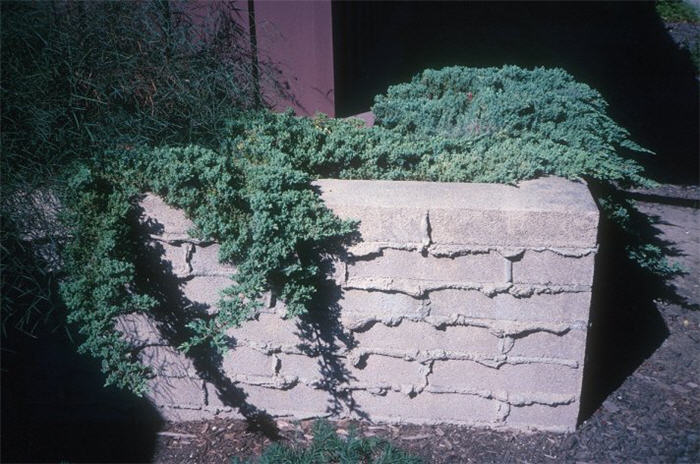| Botanical Name: Juniperus procumbens 'Nana' | |
| Common Name: Dwarf Japanese Juniper |

-
Anatomy
-
Culture
-
Design
Plant Type
Conifer, Shrub, Ground cover
Height Range
Under 1'
Flower Color
n/a
Flower Season
n/a
Leaf Color
Blue Green
Bark Color
Brown, Grey
Fruit Color
n/a
Fruit Season
n/a
Sun
Full
Water
Low, Medium
Growth Rate
Slow
Soil Type
Sandy, Clay, Loam, Rocky, Unparticular
Soil Condition
Average, Rich, Poor, Well-drained, Dry
Soil pH
Neutral, Basic
Adverse Factors
n/a
Design Styles
Formal, Japanese, Mediterranean, Ranch, Spanish
Accenting Features
Unusual Foliage
Seasonal Interest
Winter, Spring, Summer, Fall
Location Uses
Entry, Shrub Border, Foundation, Parking Strip, Patio, Parking Lot, Raised Planter, Walls / Fences
Special Uses
Cascade, Container, Erosion Control, Filler, Topiary, Mass Planting, Small Spaces
Attracts Wildlife
n/a
Information by: Stephanie Duer
Photographer:
Photographer:
-
Description
-
Notes
This attractive, evergreen groundcover grows to about 12 inches tall and up to 6 feet wide. It is very low, spreading, and mound-like -- resembling a natural bonsai. One of the best Junipers for small garden spaces. Dense evergreen foliage is blue green. This juniper is great for erosion control, difficult hillsides, raised planters, cascading over walls. It is frequently available in a staked form, to be maintained as sort of a miniature tree.
It prefers full sun with occasional watering once it's established. Though it seems indifferent to soil type, good drainage is a must. Its foliage and form are best when left un-sheared. Though junipers do well in low water conditions, they need regular and adequate water to become established. Avoid shearing or shaping, as it makes the shrub woody.